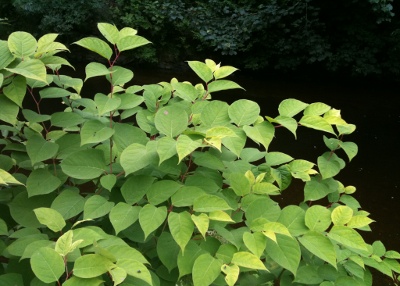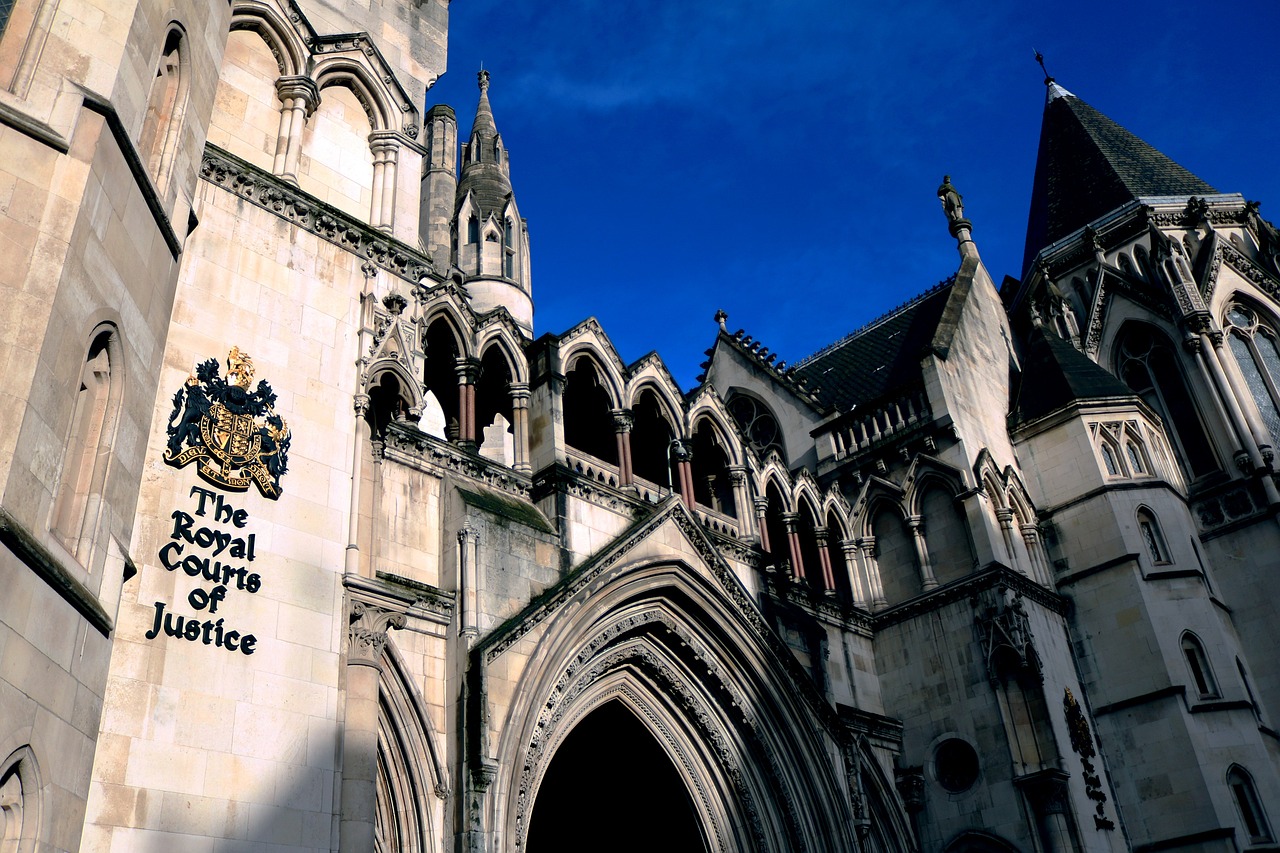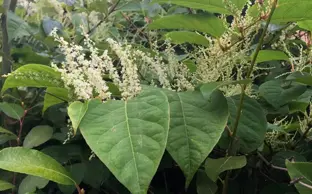Japanese Knotweed on Building Sites: What are Developers’ Options?
08-07-2024
Last updated 08-08-2024
Japanese knotweed (Reynoutria japonica) is an invasive non-native plant species (INNS). If Japanese knotweed isn’t managed properly on a building site, it can significantly impact the site, causing time delays, financial losses and legal issues.
Japanese knotweed is a perennial plant known for its bamboo-like stems that emerge in spring. Its main cause of spread is disruption and disturbance of its rhizome system, which can result in new plants growing from small fragments that can be difficult to spot amongst disturbed soils.
Understanding Japanese Knotweed and Its Impact on Building Sites
The plant’s ability to grow from such small rhizome fragments can seriously threaten built structures and areas of hard standing. For developers and builders, the key is early Japanese knotweed identification and segregation of soils and wastes on building sites to prevent the spreading of rhizome fragments. It’s important to check back on any ecology and contamination reports associated with a permitted development to see if knotweed or other invasive plants might have been identified during the planning process.
If knotweed is suspected, act early to fence it off to restrict access, and attach signs to warn workers until identification can be confirmed. As the presence of rhizomes can be difficult to spot in excavated or disturbed soils, if an area of knotweed is unknowingly excavated and added to a larger stockpile, the entirety of the stockpile might have to be considered contaminated with knotweed and managed accordingly. This could add significant and unnecessary costs to a building project.
Equally, if an area of knotweed is driven over by heavy machinery, fragments of knotweed rhizomes could get caught up in the tracks or wheels and be spread across or off the building site. This could cause new colonies of knotweed plants to emerge, which could be costly to put right and which could create a litigation risk.
Building Site Survey and Assessment
Check the planning documents for any site surveys that might have identified invasive plants, such as knotweed. This is commonly recorded in the preliminary reports for ecology and contaminated land issues. Conducting a thorough site investigation and survey is usually a planning requirement and is an important first step to managing Japanese knotweed on a building site.
It’s often possible to have knotweed positively identified by sending good quality photographs to a professional. However, for complete assurance and for the very best advice, an experienced knotweed specialist should visit your site and properly survey and assess the property risks any knotweed might pose.
Identifying knotweed early allows developers to assess potential risks. A comprehensive invasive non-native species and Japanese knotweed site survey allows developers and building site managers to effectively account for and manage any legal and financial impacts caused by such species.
Japanese Knotweed Management Options
Developers have several management options to control or remove Japanese knotweed from their sites. However, the two main options are to either apply appropriate herbicide treatments or to excavate and appropriately dispose of the knotweed plant material.
Chemical Treatments
Chemical treatments using herbicides should be undertaken at optimal times of year using the most effective application methods.
Foliar application by aerosol using sprayers is the most common method, but herbicides can alternatively be applied using different sorts of wiping applicator or by injection directly into the hollow knotweed stems. Spraying herbicides can often result in aerosols drifting, so measures to contain the sprays, such as by using spray hoods, should be considered if there are non-target plants or occupants of buildings nearby.
A significant limitation with herbicide treatment of knotweed is that it can take a long time (usually several years) to be effective. It can also cause some parts of rhizomes deeper in the ground to become dormant, which can put restrictions on how the treated land can be later used.
Physical Removal
Physical removal involves the excavation of the rhizomes, preferably in their entirety. This can be difficult, as the rhizomes can be deep and extensive.
Nevertheless, it is the only method to get rid of knotweed as completely and as quickly as possible. The main problem is that the treatment is disruptive and can generate large volumes of waste that are expense to properly dispose of. There are various methods that can be employed to reduce the volume of created waste, such as by segregating rhizome fragments from the soil or by using root barriers over and around areas of ground that are not planned to be disturbed.
Legal & Regulatory Considerations of knotweed on Building Sites
If you don’t properly deal with Japanese knotweed, there are numerous sanctions under criminal and civil laws that you could be subjected to.
Role of Local Councils and Environmental Agencies
Local councils can take action against neighbours who cause knotweed on their land to affect others. This comes under anti-social behaviour law, where councils and/or the police can force people to sort out their knotweed by issuing Community Protection Notices.
Environmental agencies, such as the Environment Agency in England, can issue fines if you don’t properly handle waste soils that are contaminated with knotweed or other invasive non-native plant materials.
Compliance with the Wildlife and Countryside Act
It is illegal to allow Japanese knotweed to spread in the wild. While there is some argument over what constitutes “the wild”, it is generally advised that to protect yourself from potential prosecution, you should prevent knotweed from spreading to other sites.
Requirement for waste disposal and management
There are numerous pieces of legislation that aim to prevent improper handling, treatment and/or disposal of knotweed and other non-native invasive plant wastes. If you don’t adhere to the rules, you run the risk of spreading knotweed and potentially having enforcement action taken against you.
Impact of Japanese knotweed on Building Development
If not managed by an experienced specialist, knotweed can delay construction, increase costs and reduce property values. If identified late in the development process, such as during groundworks, the presence of knotweed on a building site can have significant impacts on the construction programme. Late identification will usually mean that an immediate solution is needed and this will often involve the more costly approach of excavation and disposal of contaminated wastes, which can significantly increase project costs.
If identified early in the process, cheaper options of control can be programmed. An early start to the Japanese knotweed treatment process will also give confidence that the knotweed has been successfully dealt with before substantial construction works begin further down the line. This is why it is important that the proper surveys and site investigations are carried out as early as possible.
Long-Term Management and Prevention of Japanese knotweed on Building Sites
To effectively manage Japanese knotweed, developers should employ a knotweed specialist to survey the area, discuss the project requirements, understand the project risks and produce a Japanese Knotweed Management Plan (JKMP).
Following any excavation works to remove knotweed and/or any initial herbicide treatments, there should be, as part of the JKMP, regular monitoring for any indications of knotweed regrowth. Regrowth can occur if small pieces of rhizome are missed during excavation works, which is often possible due to their small size and difficulty in knowing where they are in the ground (because they can be several metres from the above ground stems). Thankfully, any such regrowth will likely be from small fragments of rhizome that can be treated easily with herbicide or dug out of the ground and safely disposed of.
If there is no monitoring and subsequent treatment of any regrowth, knotweed can quickly reestablish on a completed building site. This could make the original treatment work pointless if the problem is still present and continues to grow and potentially get worse.
If site staff and contractors are made aware of what to look out for in terms of knotweed regrowth, it can help identify problems early and allow solutions to be immediately actioned, such as the application of additional treatments, which could save time and money in the long run.
Awareness training for site personnel should ensure that everyone knows what knotweed looks like, where any treatments have taken place, what these treatments comprised and what residual risks there might be. Training could include knotweed identification and management practices. It could also include a session in the site induction process for making staff aware that knotweed is present on the site. Identification posters could also be put up in the site offices and other commonly used areas, such as the site canteen and welfare facilities. A knotweed specialist could also visit the site to provide toolbox talks on invasive non-native plants and biosecurity issues.
Conclusion
Managing Japanese knotweed on building sites requires a proactive approach and a thorough understanding of the risks and the available treatment options. Early detection, professional assessment, and a well-planned management strategy are essential to mitigate the risks posed by this invasive non-native plant.
By addressing Japanese knotweed promptly, developers can protect their investments, adhere to legal requirements, and ensure successful project completion.



